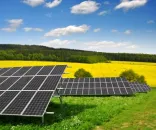NTPC projects in WB, Bihar, Orissa worst hit by coal shortage:CEA
State-run NTPC’s power projects in West Bengal, Bihar and Orissa are the worst-affected in
the eastern region due to the ongoing coal supply crisis as actual generation at these
plants is much lower than targeted.
“Problem in the eastern region power plants of NTPC is mainly due to coal shortage and
coal-handling problems,” a Central Electricity Authority (CEA) official said. The coal at
these project sites is supplied by Eastern Coalfields Ltd, a subsidiary of state-owned Coal
India.
“Eastern Coalfields is supplying coal to NTPC’s eastern region plants… Coal transportation,
which is through railways, is a problem, therefore, the hiccups,” the official said. As per
CEA data released on October 22 this fiscal, the generation target of a combined 30,597.58
million units from these plants for the April 1-October 22 period was missed, with
production of only 25,970.75 million units, a 15.12 per cent shortfall.
On October 22 alone, NTPC had set a power generation target of 154.42 million units, but
was only able to produce only 139.50 million units, translating into a shortfall of about
15 per cent vis-a-vis the target, according to the data.
“Generation at the eastern region plants is lesser than targeted because of coal supply
constraints at Kahalgaon, Farakka plants,” an NTPC official said.
NTPC has four plants in the eastern region – the 2,100-Mw Farakka (West Bengal) unit,
2,340-Mw Kahalgoan (Bihar) plant, 3,000-Mw Talcher Kaniha facility and 460-MW Talcher
thermal project in Orissa. “Coal India assigned the job of supplying fuel to eastern region
power plants to Eastern Coalfields Ltd, thinking that it would be able to excavate more
coal for NTPC plants,” the official added.
The situation has arisen because the coal mines allocated for the eastern region projects —
with a total capacity of seven million tonnes — are situated in ‘no-go’ areas, where the
Environment Ministry has banned mining on the ground that it will adversely impact the
environment.
“One of the mines has been given the green signal and the second one is yet to obtain the
go-ahead. The first will start mining now,” the official said. According to the company,
the expansion of the Rajmahal mines that feed NTPC’s Kahalgaon and Farakka projects from 10
million tonnes to 17 million tonnes is also long overdue.
“Fourteen million tonnes more coal is required,” the official said, adding that the coal
requirement at Kahalgaon had gone up after the commissioning of three 500 Mw units.
Rajmahal Coalfields is working to complete the expansion project before the end of the
ongoing XI Five-Year Plan (2007-12).













 Advertise
Advertise











